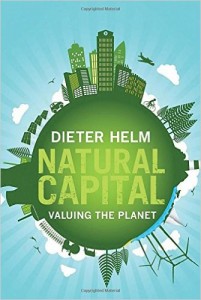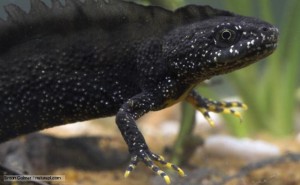This week brings my first meeting of the Natural Capital Committee, to which I was recently appointed. This is the Committee’s second phase (set for five years), its first running from 2012-2015. As part of my homework, this weekend I re-read chair Dieter Helm’s book [amazon_link id=”0300210981″ target=”_blank” ]Natural Capital: Valuing the Planet[/amazon_link].
 It’s a very accessible and clear explanation of why it’s important to value natural capital and how to go about it. As Dieter explains, there’s no doubt that economic growth has for some time been unsustainable. To be clear, that means that future generations (which could include our older selves) will have lower living standards because we have depleted by so much the capital stock providing economic services. (I would add infrastructure too, as part of the sustainability challenge, and there are similar issues as looking at renewable natural capital.)
It’s a very accessible and clear explanation of why it’s important to value natural capital and how to go about it. As Dieter explains, there’s no doubt that economic growth has for some time been unsustainable. To be clear, that means that future generations (which could include our older selves) will have lower living standards because we have depleted by so much the capital stock providing economic services. (I would add infrastructure too, as part of the sustainability challenge, and there are similar issues as looking at renewable natural capital.)
The book presents the case for re-investing in natural capital in order to enable sustainable growth – it argues against the ‘no growth’ environmentalists. The mechanism it proposes is an aggregate natural capital rule: “The aggregate level of natural capital should not decline.” If there is damage done in one place, it has to be made good by compensating gains elsewhere. The rule can be applied to renewables, and can be extended to non-renewables by requiring a natural capital fund to compensate for extraction (much as the Norwegians do for their oil and gas extraction).
This is a radical change when you start to look at the amount of money that might be involved. The book suggests it is of the order of at least 4% of current GDP. And of course the details are extremely complicated. To state just two hurdles: we do not have good statistics on natural capital, although the Office for National Statistics does have a programme of work on this; and it is hard to value non-marketed assets and transactions, especially when there are substantial externalities, non-linearities and system interdependencies. Cost-benefit analysis – the only tool economics has to offer – applies to marginal (linear) changes and in practice does not try to value external benefits.
One of the book’s examples about habitats and how to think about the trade-offs compares great crested newts and nightingales. Both are protected species, but nightingales’ habitats are much harder to recreate elsewhere, arguing for a higher barrier to developing the kinds of woodland where they live. I can’t resist recounting an anecdote about newts. If you visit construction sites, as I sometimes have, there will often be a fence half a meter high around the work – to keep out the newts, which have to be carefully relocated from inside the site to outside. In my BBC Trust days, I was quizzing the great Sir David Attenborough about the fate of the poor great crested newts. He said (and who knows, maybe he was joking) that the newts had only got into the legislation by accident and the little creatures are not at all rare. Indeed, he had some in his suburban garden. If you were a newt, isn’t that the best garden you could pick as your home?

Male Great Crested Newt (Triturus cristatus) with breeding colours, underwater, captive UK
Anyway, I’m delighted to have been appointed to the Committee. It speaks to my own pre-occupations with sustainability ([amazon_link id=”0691156298″ target=”_blank” ]The Economics of Enough[/amazon_link]) and measuring the economy ([amazon_link id=”0691169853″ target=”_blank” ]GDP: A Brief but Affectionate History[/amazon_link]). This is exciting territory in terms of the economics, and profoundly important in terms of all our futures.
[amazon_image id=”0691156298″ link=”true” target=”_blank” size=”medium” ]The Economics of Enough: How to Run the Economy as If the Future Matters[/amazon_image] [amazon_image id=”0691169853″ link=”true” target=”_blank” size=”medium” ]GDP: A Brief but Affectionate History[/amazon_image]
